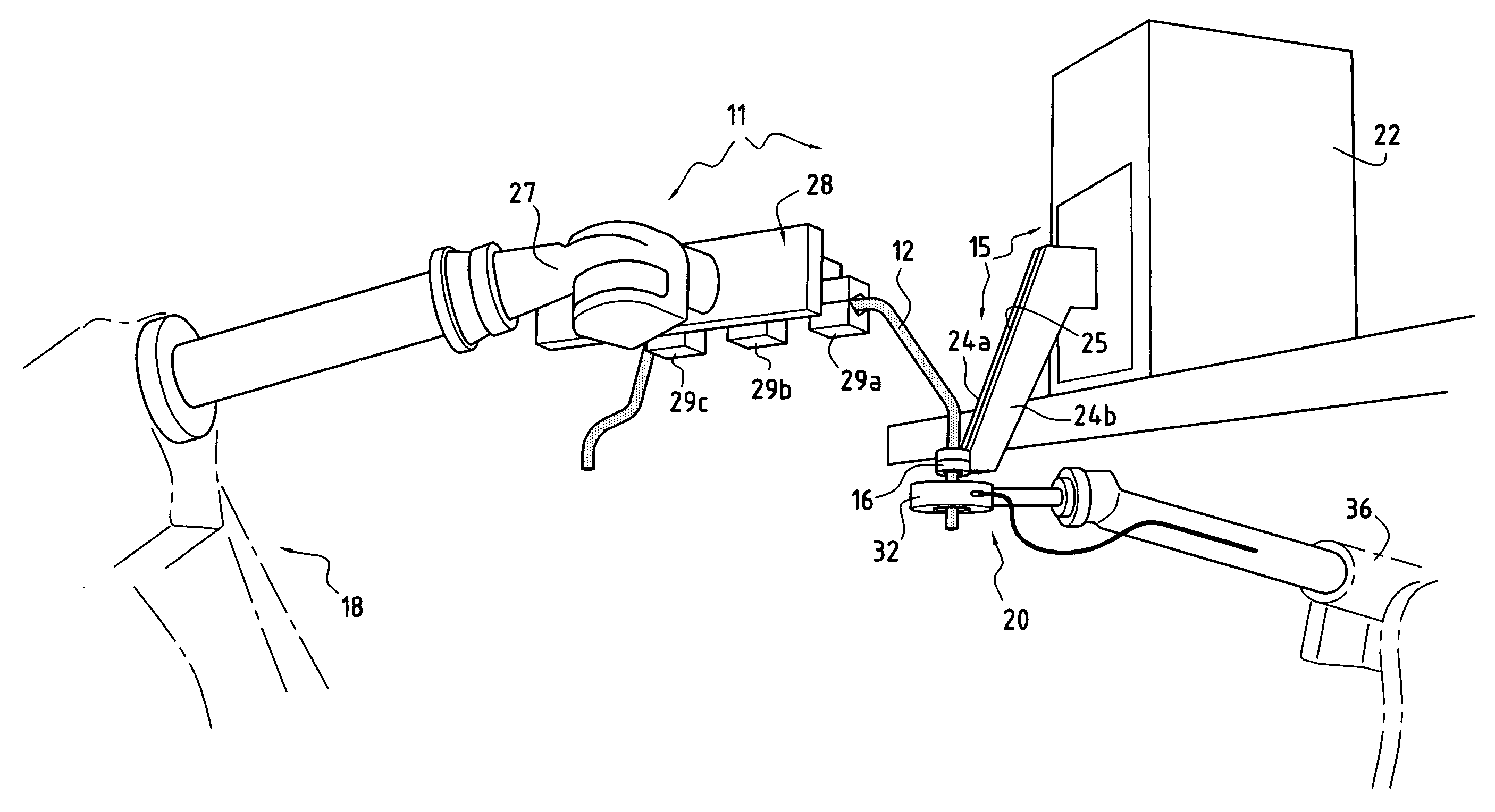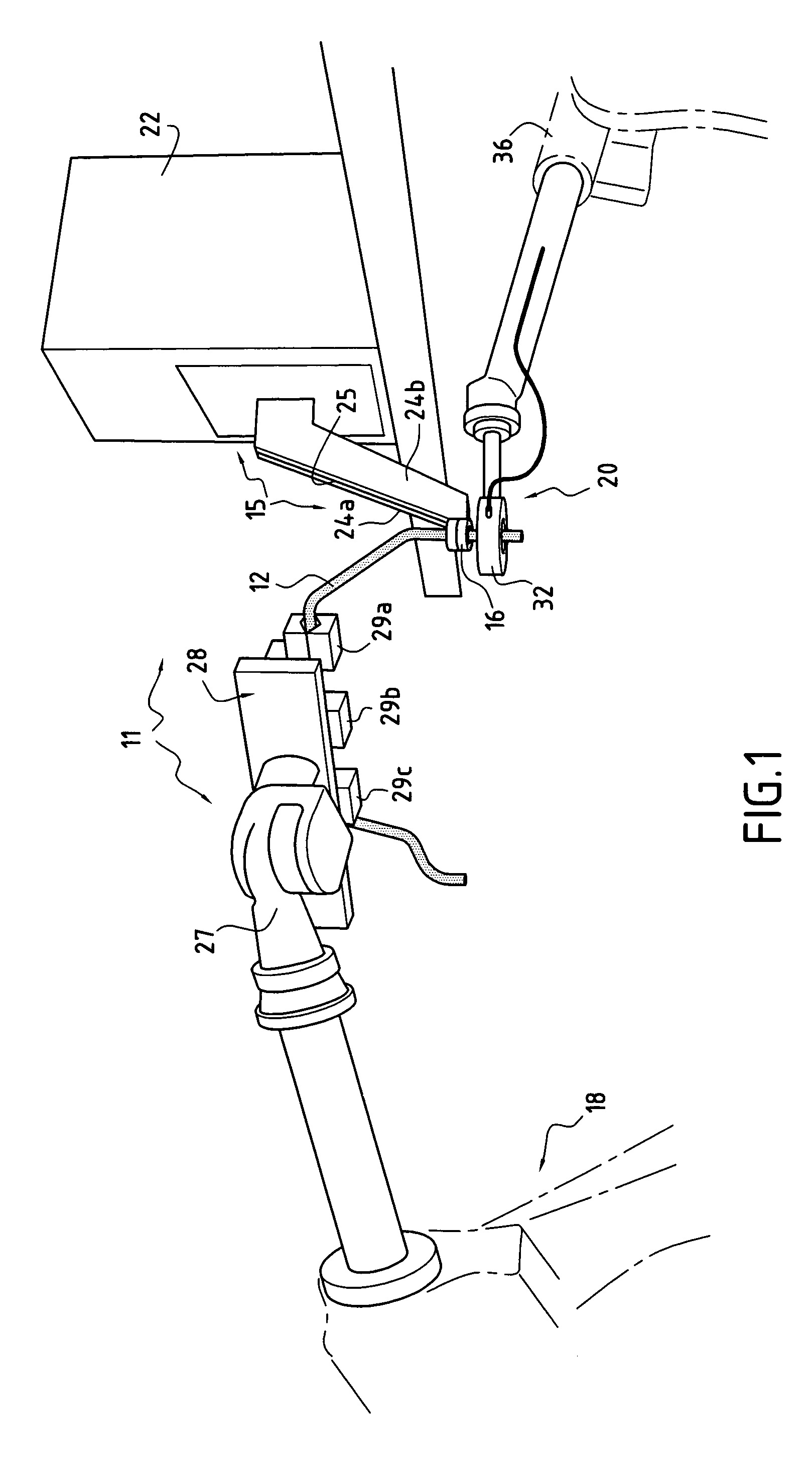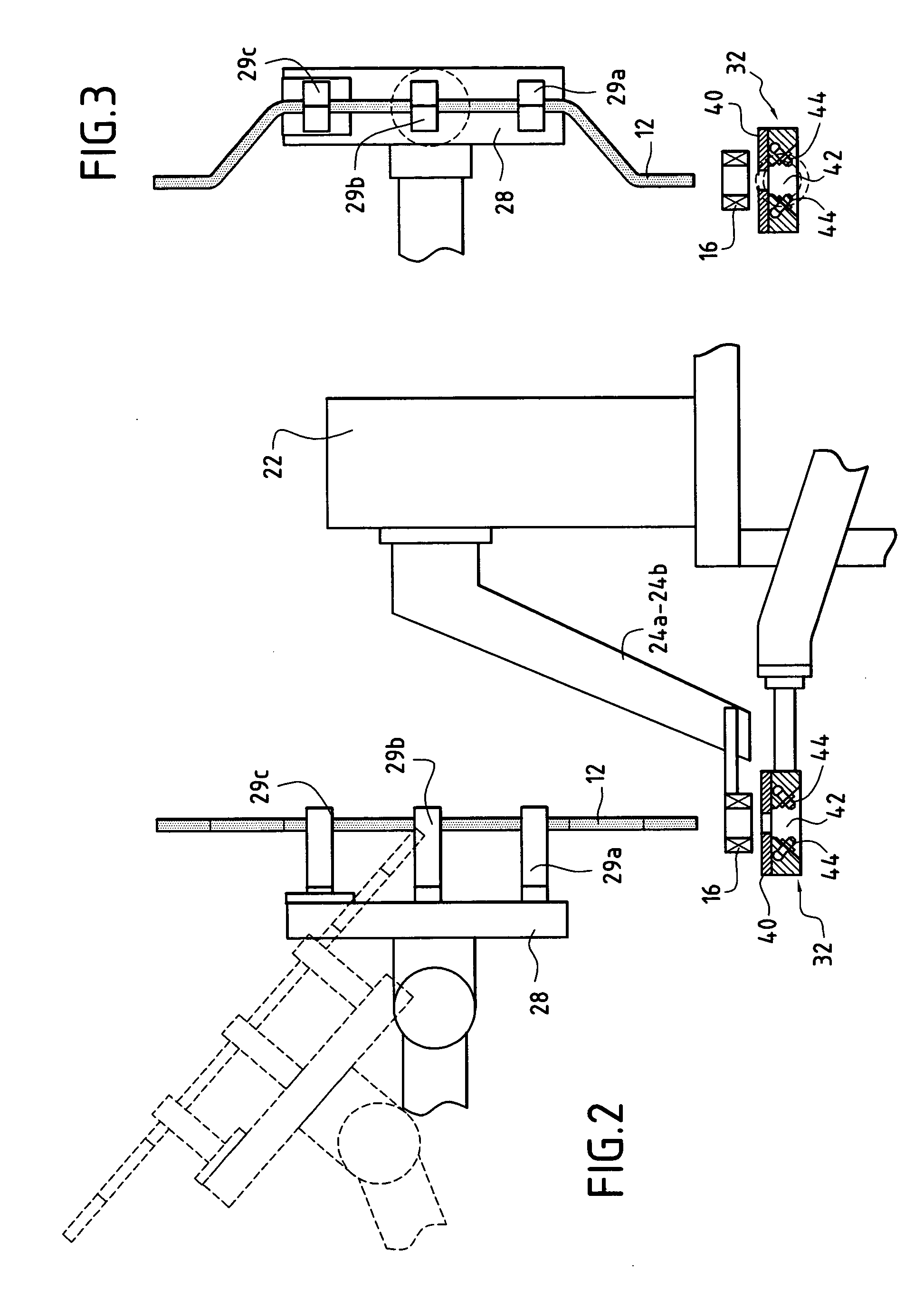Induction quenching installation, in particular for fabricating suspension components
a technology of induction quenching and fabrication of suspension components, which is applied in the field of induction quenching, can solve the problems of increasing strain, unable to produce high-stressed bars, and the withstandability of such elements is becoming increasingly critical, so as to improve the crystalline structure of metals, improve the bending ability of treated zones, and reduce the effect of strain
- Summary
- Abstract
- Description
- Claims
- Application Information
AI Technical Summary
Benefits of technology
Problems solved by technology
Method used
Image
Examples
Embodiment Construction
[0032] The installation 11 as shown is more particularly designed for applying heat treatment by localized induction heating of an elongate metal element 12 which, in the example shown, is an anti-roll bar of a motor vehicle suspension system. At this stage of fabrication, this element is in the form of a solid cylindrical bar of steel which has been preformed cold using a conventional technique. As described below, the same installation can be used for applying heat treatment to a hollow bar or to an active half-bar, etc . . . . The element for treatment is fabricated in this case from a cylindrical bar of lightly-alloyed steel. After being shaped cold, this element is subjected to surface quenching implemented by the installation shown. At the end of this surface quenching, the portions of the element that have been surface quenched are constituted by a surface zone of martensitic structure and a core zone that is ferrito-pearlitic, these two zones being united via a transition zo...
PUM
| Property | Measurement | Unit |
|---|---|---|
| Thickness | aaaaa | aaaaa |
| Structure | aaaaa | aaaaa |
Abstract
Description
Claims
Application Information
 Login to View More
Login to View More - R&D
- Intellectual Property
- Life Sciences
- Materials
- Tech Scout
- Unparalleled Data Quality
- Higher Quality Content
- 60% Fewer Hallucinations
Browse by: Latest US Patents, China's latest patents, Technical Efficacy Thesaurus, Application Domain, Technology Topic, Popular Technical Reports.
© 2025 PatSnap. All rights reserved.Legal|Privacy policy|Modern Slavery Act Transparency Statement|Sitemap|About US| Contact US: help@patsnap.com



